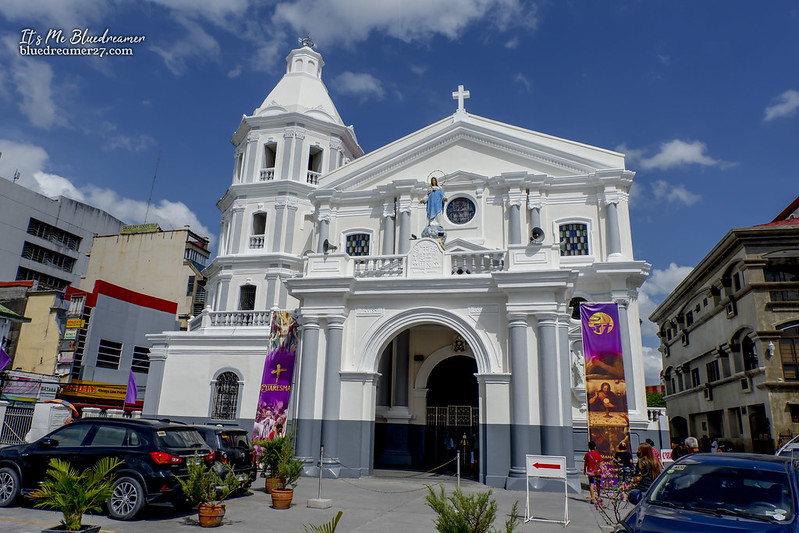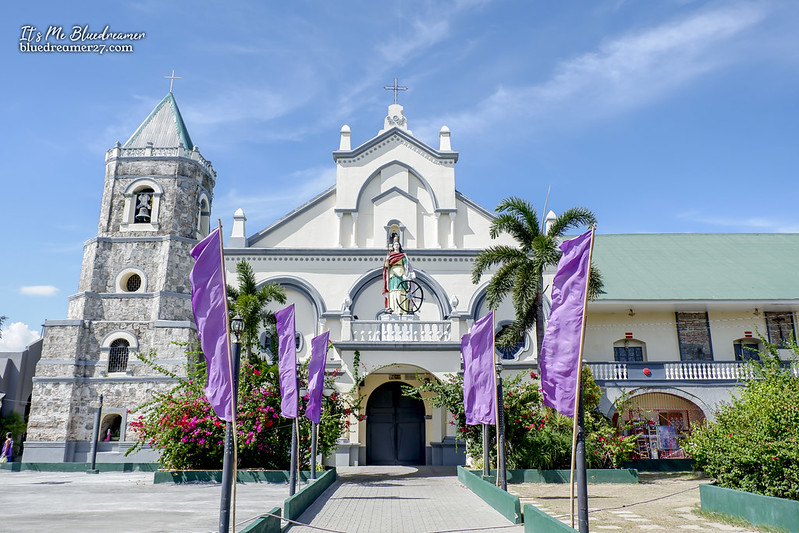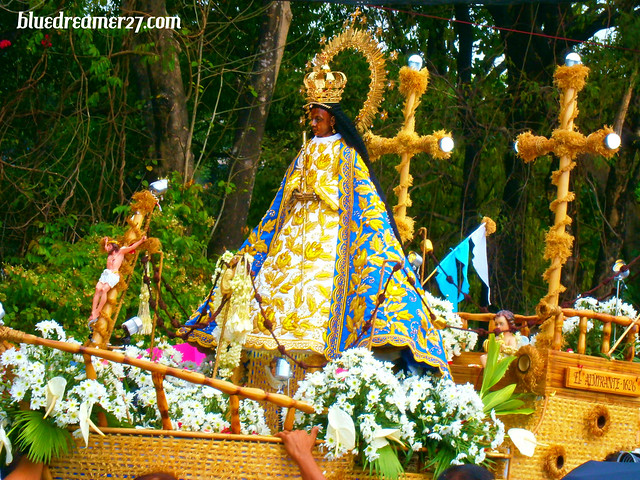A Pilgrimage to Pampanga: A Visit to 7 Beautiful Churches in Pampanga
After visiting 14 beautiful churches in Laguna, we went to visit some churches in Pampanga the following week. I have been aiming to visit this town for a long time and I am happy that I finally got the chance to see some of the most beautiful churches in the country. This is not a bold claim at all because Pampanga is indeed the home of some uniquely, intricately, and beautifully detailed churches in the Philippines. The only church i managed to visit in Pampanga prior to this pilgrimage is the Sunken Shrine of Our Lady of Lourdes in Bacolor (Check: Archdiocesan Shrine of Our Lady of Lourdes/ The Sunken Shrine in Bacolor, Pampanga).
The town of Pampanga got its name from the Spaniards. They named the town La Pampanga after they encountered natives living along the river banks or “pampang”. The town was established in 1571 which makes it the first Spanish province on Luzon Island. When the Mount Pinatubo erupted in 1991, the towns and villages of the province was submerged by massive lahar floods.
We picked seven old churches in Pampanga for our Visita Iglesia.

1. Holy Rosary Parish Church in Angeles City, Pampanga
First on our list is the big church of Holy Rosary Parish or the Santo Rosario Parish in Angeles City, Pampanga. The locals are also calling it as “Pisambang Maragul” or the big church because of its enormous structure. It is also recognized by the National for Culture and the Arts as a National Historical site. In fact, the backyard of the church became the execution grounds from 1896-1898 in shooting down Filipino rebels and suspects by the Spanish forces. It was also used by the U.S. Army as a military hospital from 1899 to 1900. Today, the Holy Rosary Parish Church serves as the city’s main religious center, being located at the front of the former city hall, now known as the Museo ning Angeles. Local devotees flock the church and faithfully attend activities especially during Holy Week. (Read more: Holy Rosary Parish Church (Big Church) of Angeles City, Pampanga )

2.Apung Mamacalulu Shrine in Angeles City
Not too far from the Santo Rosario Parish is the Archdiocesan Shrine of Christ our Lord of the Holy Sepulcher or more popularly known to locals as Apung Mamacalulu. The place enshrines the miraculous image of the Santo Sepulcro, a statue that depicts the burial of Jesus Christ. The construction of the present shrine was completed in 2012 but the venerated image of Apung Mamacalulu has a long rich history and controversy. It should be noted that Angeles City has two venerated images of Apung Mamacalulu; the other one being enshrine in Santo Rosario Parish.
(Read more: Apung Macalulu Shrine of Angeles City, Pampanga )

3. San Fernando Cathedral
After Angeles City, we headed next to San Fernando to visit the Metropolitan Cathedral. It was formerly known as the Cathedral of Our Lady of the Assumption until the Diocese of San Fernando was elevated into an Archdiocese in 1975. The first church was founded in 1755 under the patronage of San Fernando III, King of Castile. The construction of the present style church started in 1788 and was completed in 1808. It was rededicated to the Assumption of Our Lady. The church was destroyed in numerous occasions. It was intentionally burned down during the Philippine Revolution. In 1948 the church was elevated to Cathedral when it became the seat of the Diocese of San Fernando and was elevated as an Archdiocese in 1975.
(Read more: San Fernando Cathedral, San Fernando, Pampanga )

4. San Guillermo Parish in Bacolor
Finally, I was able to visit the famous San Guillermo Parish in Bacolor, Pampanga. Bacolor is one of the oldest towns in the Philippines and the church of San Guillermo was established in 1576. In 1880, the church was destroyed by an earthquake and was rebuilt after 6 years. However, San Guillermo Parish was merely submerged in lahar in 1995, an aftermath of the Mount Pinatubo eruption in 1991. Only half of the original facade of the church can be seen today. After the eruption, the town’s people excavated the altar and the retablo and relocated it under the dome. The retablos niches are filled with centuries-old statues which were saved from destruction of the lahar. The citizens of Bacolor carefully excavated the ornately carved main and side altars and restored in its immaculate condition. We also get a chance to see the adjacent museum showcasing old images and paintings depicting the Mount Pinatubo eruption events.
Read more:

5. Santiago Apostol Parish or the Betis Church of Guagua
Probably my favorite part of this pilgrimage is when we visited the Betis Church in Guagua, Pampanga. While it might look simple on the outside, the church will surprise you with its immensely beautiful interior. Dedicated under the patronage of Saint James the Apostle, Betis Church was established in 1607. The unique design of Betis Church reflects the integration of Spanish and Latin American architecture to indigenous architecture, including elements of Oriental style during the Spanish colonial era.It was declared a National Cultural Treasure by the National Museum and the National Commission for Culture and the Arts

6. Santa Catalina De Alejandria Parish in Arayat, Pampanga
Our sixth destination is a church in Arayat, Pampanga that is dedicated to Santa Catalina de Alejandria. Commonly known as the Arayat Church, it features a Renaissance style . In 1600, Fray Contreras established the parish church of Arayat. The church was dedicated to Santa Catalina de Alejandria, a 4th-century martyr. She was considered as one of the most important saints of the Medieval Period. Santa Catalina Church was built in 1753, based on the canonical books stating that baptismal activities have been conducted by Fray Villalobos since 1758. Since then, the church underwent major restorations to achieve its current design. An image of Santa Catalina is located at the portico of the church while a separate antique image is located at the main altar

7. San Pedro Apostol Parish in Apalit, Pampanga
We concluded our pilgrimage in Apalit. We were greeted by its enormous facade that features Neo-Renaissance Style with its plain, low segmental pediment and the symmetrical alignment of 2 flanking towers. The additional construction of the two towers beside the church served as reinforcements to improve the structural integrity of the church. The first church was founded in 1590 but the present one is constructed between 1876 and 1880. It features stunning ceiling art paintings also known as also known as trompe l’oeil . On July 22, 2017, the holy relic of St. Peter was enthroned in the Parish. The holy relic is a fragment of the bones of the remains of St. Peter. This is the only church that has the relic of St. Peter other than St. Peter’s Basilica in Rome.
This Post is part of my Pampanga Pilgrimage series. Feel free to revisit my previous articles here
- A Pilgrimage to Pampanga: A Visit to Seven Beautiful Churches in Pampanga
- Holy Rosary Parish Church (Big Church) of Angeles City, Pampanga
- Apung Macalulu Shrine of Angeles City, Pampanga
- San Fernando Cathedral, San Fernando, Pampanga
- San Guillermo Parish of Bacolor, Pampanga
- Museo de Bacolor
- Betis Church of Guagua, Pampanga
- Santa Catalina de Alejandria Parish of Arayat, Pampanga
- Kabigting Halo-Halo of Arayat
- San Pedro Apostol Parish of Apalit Pampanga
For the meantime, feel free to check my other Pilgrimage Series
► Pilgrimage to Bulacan
►Pilgrimage to Tarlac
►Pilgrimage in Bataan
►Pilgrimage in Cavite
►Pilgrimage in Zambales
►Pilgrimage In Manila
►Pilgrimage in Batangas
►Pilgrimage to Pangasinan
Also feel free to follow me on my Social Media accounts for more updates
Facebook : It’s Me Bluedreamer!
Instagram : @bluedreamer1227 / @bdrp2020 (Religious photography account)
Twitter : @bluedreamer_27



Pingback: Holy Rosary Parish of Angeles City, Pampanga - It's Me Bluedreamer!